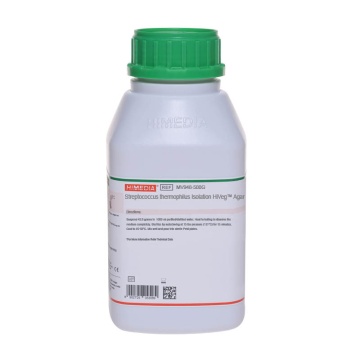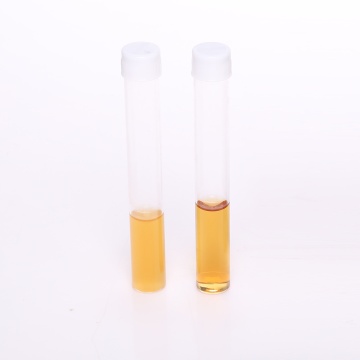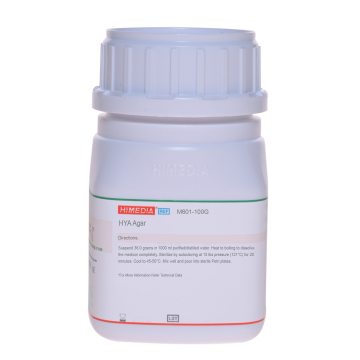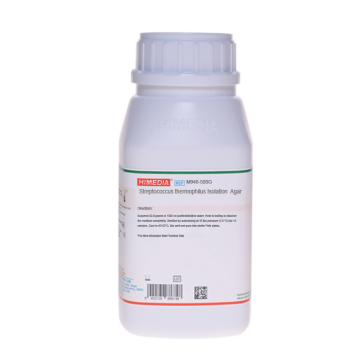 Your enquiry has been submitted
Your enquiry has been submitted
M17 Broth w/o Lactose
Intended Use
Recommended on addition of lactose, this medium is used for cultivation of Streptococcus thermophilus.
Composition**
| Ingredients | Gms / Litre |
|---|---|
| Disodium-ß-glycerophosphate | 19.000 |
| Soya peptone | 5.000 |
| Tryptone | 5.000 |
| HM peptone B # | 5.000 |
| Yeast extract | 2.500 |
| Ascorbic acid | 0.500 |
| Magnesium sulphate | 0.250 |
Final pH (at 25°C): 6.9±0.2
**Formula adjusted, standardized to suit performance parameters
# - Equivalent to Beef extract
Directions
Suspend 37.25 grams in 950 ml purified / distilled water. Heat, if necessary, to dissolve the medium completely. Sterilize by autoclaving at 15 lbs pressure (121°C) for 15 minutes. Cool to 45-50°C and aseptically add 50 ml of 10% w/v lactose solution sterilized separately by filtration through a 0.2 µm membrane filter. Mix well and dispense as desired.
Principle And Interpretation
M17 broth is based on the formulation described by Terzaghi and Sandine (8) for the isolation and enumeration of Streptococcus and their bacteriophages.
Lactic Streptococci are nutritionally fastidious and require complex media for optimal growth (2, 6).
Tryptone, Soya Peptone, Yeast extract, HM peptone B provide carbonaceous, nitrogenous compounds, vitamin B complex and other essential growth factors. Lactose is the fermentable carbohydrate. Ascorbic acid is stimulatory for the growth of lactic Streptococci. Magnesium sulphate provides essential ions to the organisms. Diodium ß-glycerophosphate maintains the pH about 5.7 due to its buffering action.
Shankar and Davies (7) reported isolation and enumeration of Streptococcus thermophilus from yoghurt. M17 broth is recommended by the International Dairy Federation (3) for selective enumeration of Streptococcus thermophilus from yoghurt. It is also suitable for cultivation and maintenance of starter cultures for cheese and yoghurt manufacturing.
Type of specimen
Dairy samples.
Specimen Collection and Handling
For dairy samples, follow appropriate techniques for sample collection and processing as per guidelines (1,9). After use, contaminated materials must be sterilized by autoclaving before discarding.
Warning and Precautions
Read the label before opening the container. Wear protective gloves/protective clothing/eye protection/ face protection. Follow good microbiological lab practices while handling specimens and culture. Standard precautions as per established guidelines should be followed while handling specimens. Safety guidelines may be referred in individual safety data sheets.
Limitations
- Further biochemical testing is required for complete identification.
- Some organisms may show poor growth due to nutritional variations.
Performance and Evaluation
Performance of the medium is expected when used as per the direction on the label within the expiry period when stored at recommended temperature.
Quality Control
Appearance: Cream to light yellow homogeneous free flowing powder
Colour and Clarity of prepared medium: Light yellow coloured clear to slightly opalescent solution in tubes
Reaction: Reaction of 3.73% w/v aqueous solution at 25°C. pH : 6.9±0.2
pH: 6.70-7.10
Cultural Response: Cultural characteristics observed after an incubation at 35-37°C for 24-48 hours.
| Organism | Inoculum (CFU) | Growth |
|---|---|---|
| Enterococcus faecalis ATCC 29212 (00087*) | 50-100 | good-luxuriant |
| Lactobacillus bulgaricus ATCC 11842 (00102*) | 50-100 | none-poor |
| Lactobacillus leichmannii ATCC 4797 | 50-100 | good-luxuriant |
| Lactobacillus plantarum ATCC 8014 | 50-100 | good-luxuriant |
| Streptococcus thermophilus ATCC 14485 | 50-100 | good-luxuriant |
Key : (*) Corresponding WDCM numbers.
Storage and Shelf Life
Store between 10-30°C in a tightly closed container and the prepared medium at 15-25°C. Use before expiry date on the label. On opening, product should be properly stored dry, after tightly capping the bottle in order to prevent lump formation due to the hygroscopic nature of the product. Improper storage of the product may lead to lump formation. Store in dry ventilated area protected from extremes of temperature and sources of ignition. Seal the container tightly after use. Product performance is best if used within stated expiry period.
Disposal
User must ensure safe disposal by autoclaving and/or incineration of used or unusable preparations of this product. Follow established laboratory procedures in disposing of infectious materials and material that comes into contact with clinical sample must be decontaminated and disposed of in accordance with current laboratory techniques (4,5).
Reference
- American Public Health Association, Standard Methods for the Examination of Dairy Products, 1978, 14th Ed., Washington D.C.
- Anderson A.W. and Elliker P.R., 1953, J. Dairy Sci., 36:161.
- International Dairy Federation, 1981, Joint IDF/ISO/AOAC Group E44.
- Isenberg, H.D. Clinical Microbiology Procedures Handbook. 2nd Edition.
- Jorgensen, J.H., Pfaller , M.A., Carroll, K.C., Funke, G., Landry, M.L., Richter, S.S and Warnock., D.W. (2015)Manual of Clinical Microbiology, 11th Edition. Vol. 1.
- Reiter B. and Oran J.D., 1962, J. Dairy Res., 29:63.
- Shankar P.A. and Davies F.L., 1977, Soc. Dairy Technol., 30:28.
- Terzaghi B.E. and Sandine W.E., 1975, Appl. Microbiol., 29:807.
- Wehr H. M. and Frank J. H., 2004, Standard Methods for the Microbiological Examination of Dairy Products, 17th Ed., APHA Inc., Washington, D.C.
| Product Name | M17 Broth w/o Lactose |
|---|---|
| SKU | M1907 |
| Product Type | Regular |
| Physical Form | Powder |
| Origin | Animal |
| Packaging type | HDPE |
| References | 1.Terzaghi B.E. and Sandine W.E., 1975, Appl. Microbiol., 29:807.2.Anderson A.W. and Elliker P.R., 1953, J. Dairy Sci., 36:161.3.Reiter B. and Oran J.D., 1962, J. Dairy Res., 29:63.4.Shankar P.A. and Davies F.L., 1977, Soc. Dairy Technol., 30:28.5.International Dairy Federation, 1981, Joint IDF/ISO/AOAC Group E44. |
| Customized Product Available | No |











